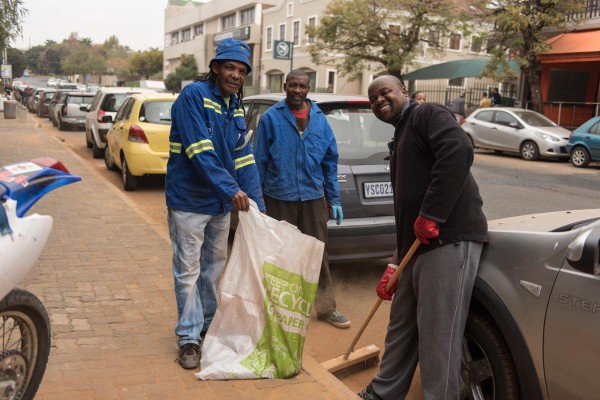Going the Extra Mile (GEM) incentivises ordinary people to engage in community improvement projects by using an alternative payment system of mobile rewards, or GEMs.
GEMs are earned by participating in Going the Extra Mile’s supported projects – anything from community clean ups to the building of a vegetable garden - and once earned, can be spent in a variety of shops, supermarkets and online stores who have signed up to be corporate sponsors.
Over the last 12 months, the team have been trying to find out whether citizen-led local governance can really be encouraged through an innovative digital reward system, and what lessons can be drawn from their experiences.
Awareness-raising key to engaging citizens – but you have to do it right
Engaging citizens is hard. First of all you have to let people know the mobile reward system exists. Camilo Ramada, Project Manager of GEM, explains how important it is that projects and their donors invest in this:
"We ran a successful digital campaign and we reached a lot of people. Luckily we were allowed to use part of the grant funds for this, it has been crucial and paid off. Our community has become very big now."
The team ran pilots in several communities and attracted national media attention, such as in City Buzz and News24. GEM felt this was important as it takes the project from something people know about to something they might want to engage in.
Government responds to numbers – be prepared to show what you’ve got
After working at the community level, the next step for the team was to involve government. Initially, government was not included in the project, but after the GEM rewards system proved successful, GEM received requests from government actors and agencies who wanted to know how they could be involved.
‘Because we received so much publicity, we were contacted by Brand South Africa – a public institution promoting South Africa outside and inside the country. They invited us to participate in their Play Your Part campaign, which motivates citizens to get involved in social action. That was the first sign that government in South Africa wants to work with our tool.’
Camilo Ramada
One conclusion from the team is that government only engages when a tool or approach is proven successful in engaging large groups of people. Then there are much clearer incentives (and less risk) for government actors to come on board with a popular movement. But how often are projects given time to do that?
If your target audience doesn’t know ‘What’s in it for me?’ they won’t engage
The lessons above are about not only communicating to stakeholders about how they can engage with the project – but also emphasising why they should do so. GEM as a project is about the incentives provided and the immediate good seen by the community as a result of the GEM community members’ actions. Positive change that is local and visible, and that quickly changes the environment you live in, creates in itself a momentum for change.
Sustainability and responsibility
GEMs may or may not be sustainable, but the project is as much about starting a positive cycle of changes that can continue, bringing community members together to act. The GEM team, like Making All Voices Count, is still debating how best, where and when this approach can be deployed. We’re also left with the question of where responsibility for such an initiative lies – should the community be building its own projects, and hoping government wants to get involved, or is it possible that future schemes could be led by the government itself?
